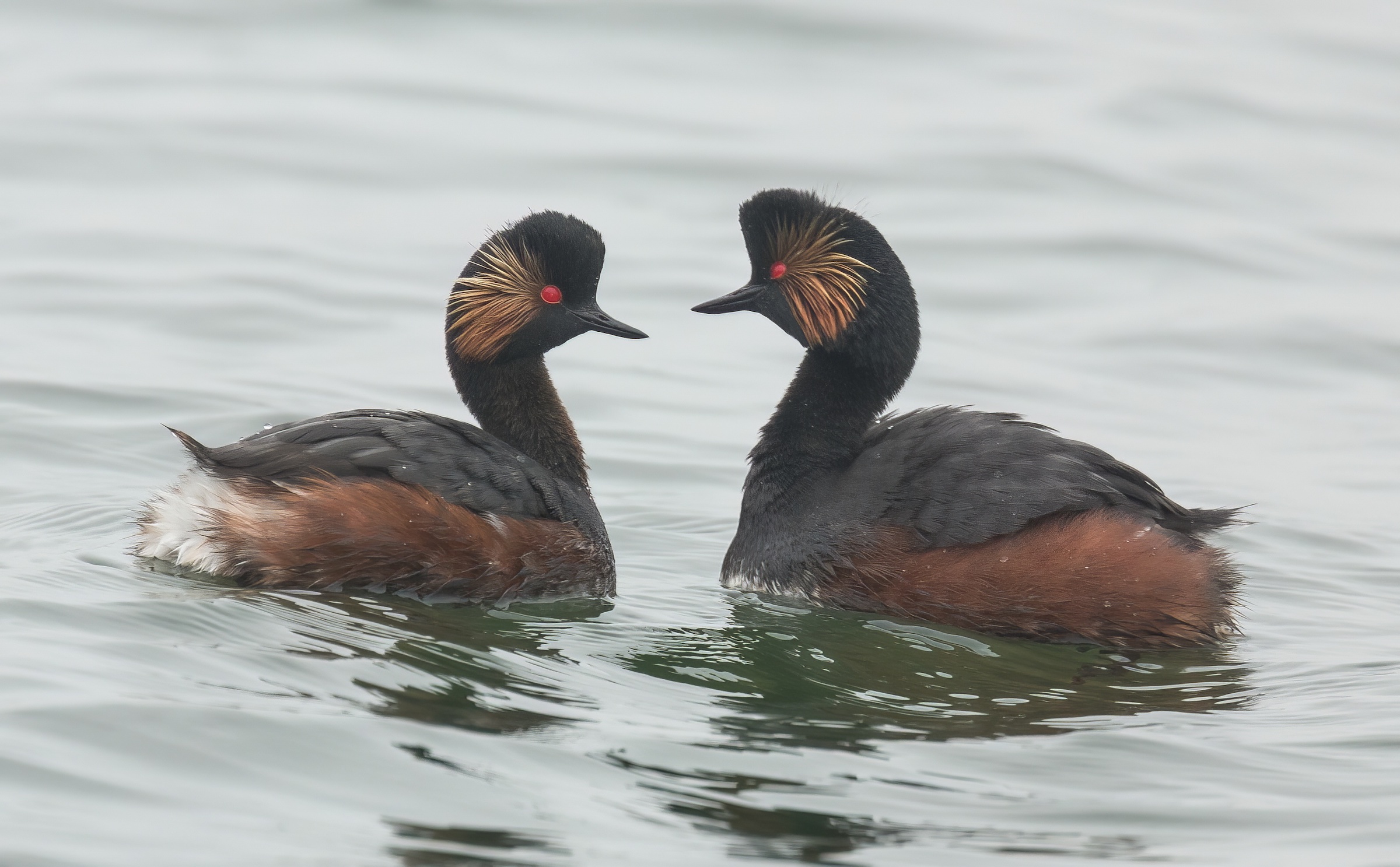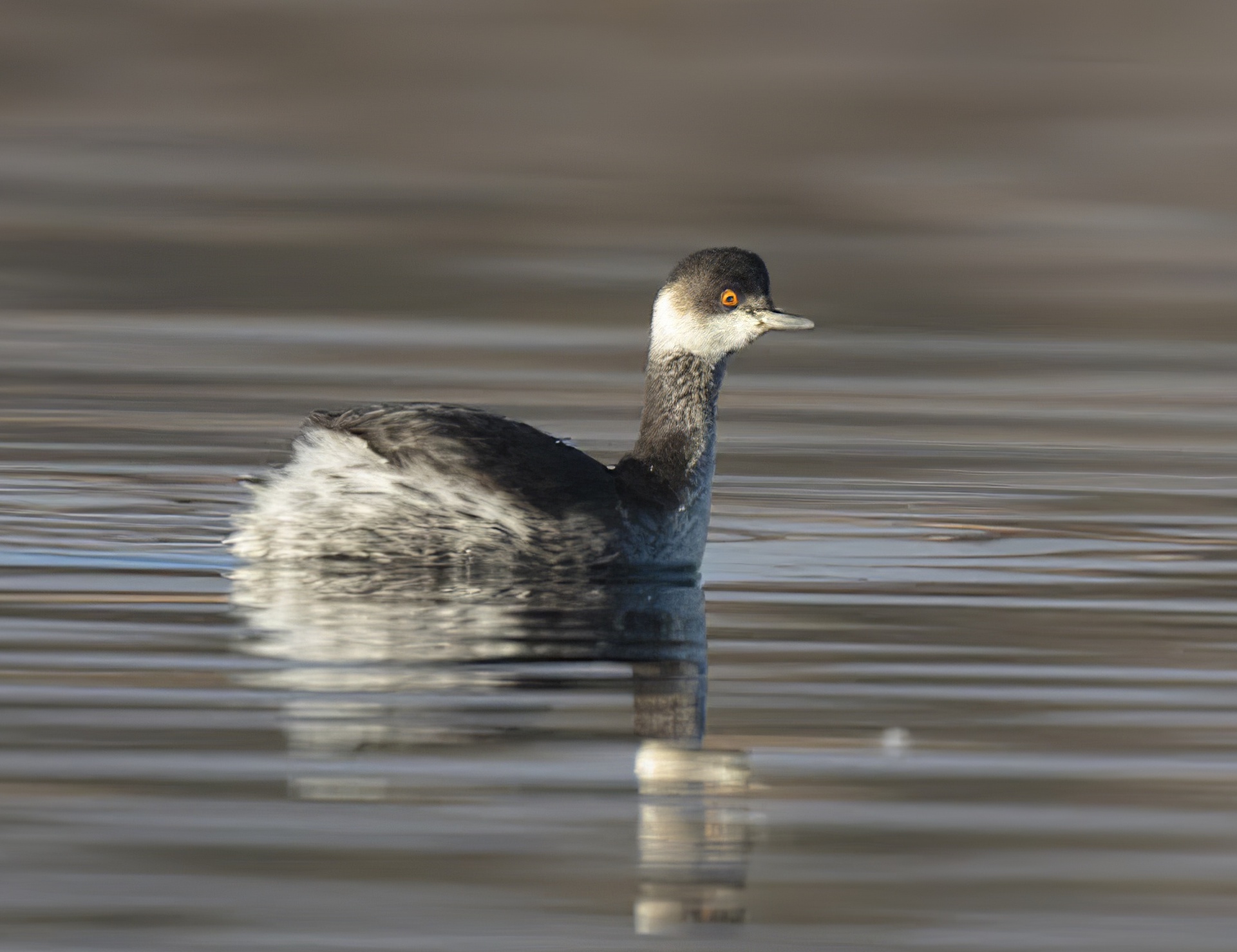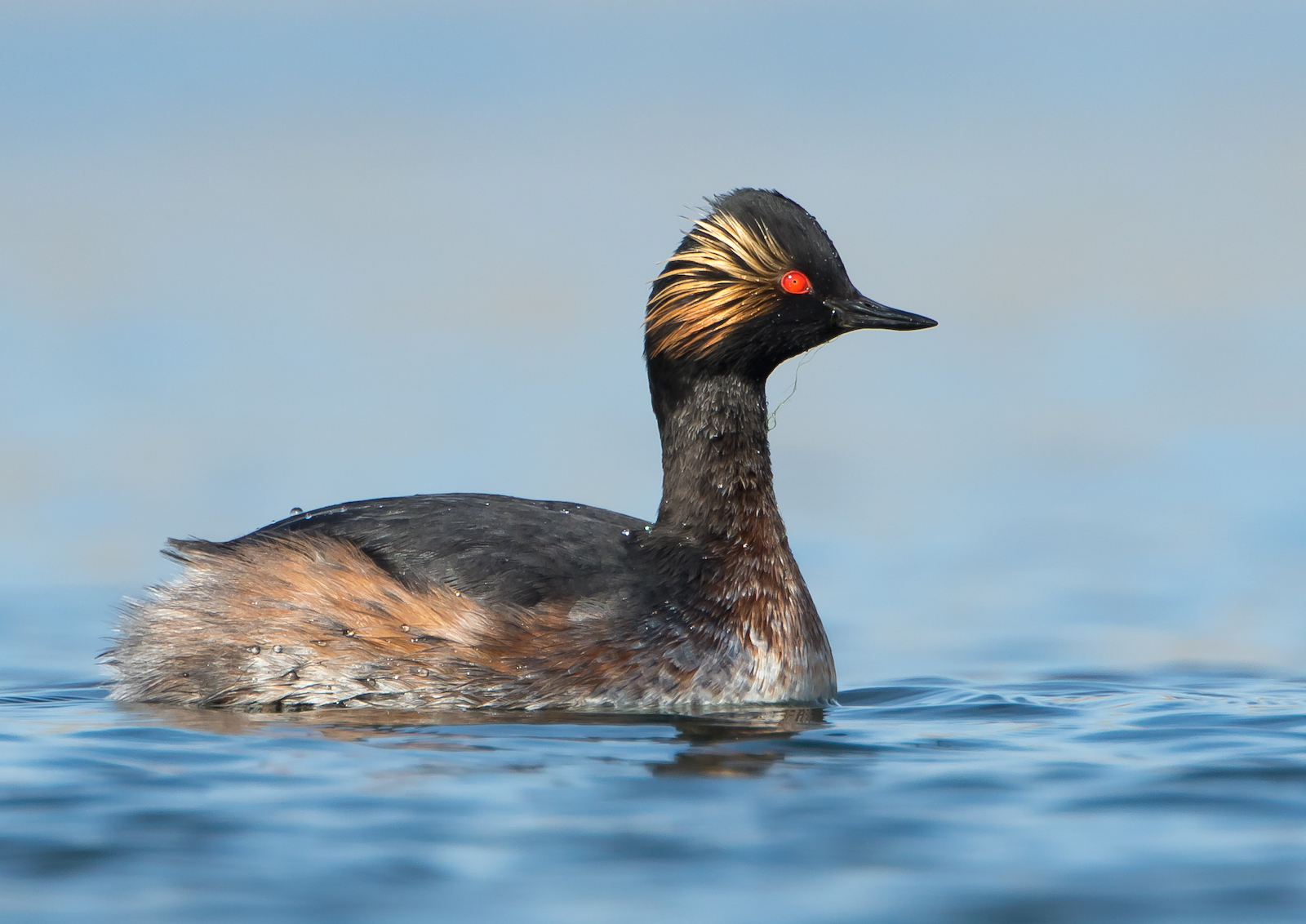Black-necked Grebe Podiceps nigricollis
Rare breeder, scarce passage migrant and winter visitor. RBBP.



Formerly bred in the fens and was said to be particularly common around Spalding but they had gone by the early 19th century with the drainage of the fens. For many years it was a vagrant but from 1954 it became a rare winter visitor and migrant. The Atlas records show that pairs started to linger in the 1980s, but no breeding was confirmed until 1998 when three pairs produced seven young at two gravel pit sites. Nesting birds were targeted by egg collectors and since then details of the three sites where it bred up to 2018 have been kept confidential. From 1998, 1-3 pairs bred each year. Then in 2009, five pairs bred. RBBP records show an average of five pairs per year bred during the period 2013-2017. The best year was 2014 when seven pairs raised two young. Sadly in 2018 there was just one pair. Birds bred successfully at Frampton Marsh in 2019 and 2020 under the protection of the RSPB: in 2019 one pair raised two young and in 2020 two pairs raised three young.
Migrant and wintering birds appear in small numbers from late August mainly at inland sites such as Covenham Reservoir and Toft Newton Reservoir, and again from late February-early March. Spring flocks of up to seven birds have been recorded at these two sites, but only 1-2 in most winters. Similarly, coastal sites record a few at both seasons but they are much scarcer on the sea than their congeners, Slavonian Grebe P. auritus.
(Account as per new Birds of Lincolnshire (2021), included September 2022 with updates)
